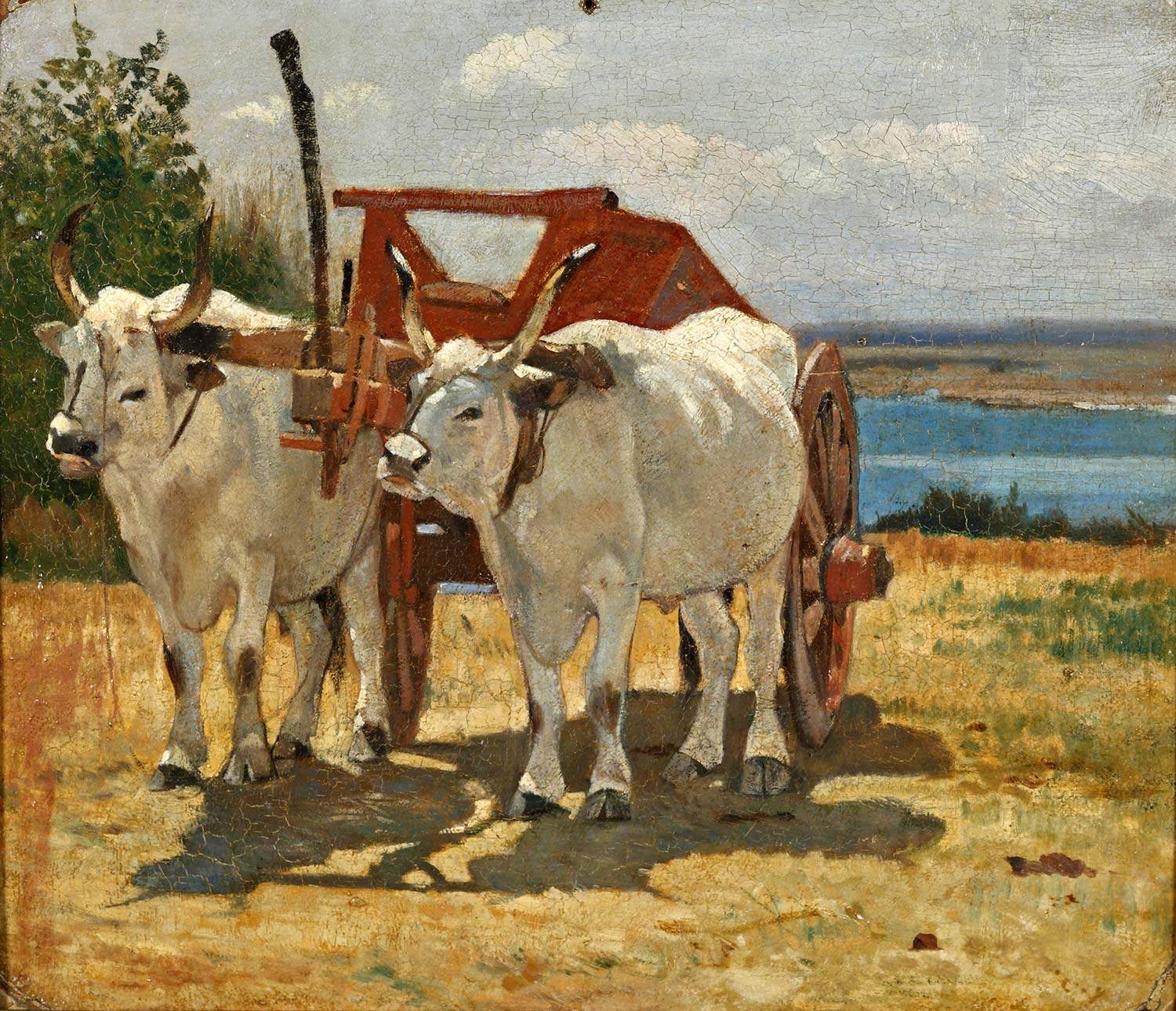The Macchiaioli, artists who gathered in Florence in the mid-19th century around the Caffè Michelangelo in an artistic movement that was fundamental to the birth of modern art, are the protagonists of the exhibition I Macchiaioli e la pittura en plein air tra Francia e Italia, at the National Artillery Historical Museum-Mastio della Cittadella in Turin, from Feb. 3 until April 1.
Produced by Navigare srl, with the patronage of the Piedmont Region and the City of Turin and the collaboration of AICS, the exhibition curated by art historian Simona Bartolena is housed in the facility entrusted to Difesa Servizi, the investee of the Ministry of Defense that deals with the enhancement of the Ministry’s assets, including the military museum heritage to disseminate the culture of Defense also through cultural activities such as exhibitions.
The exhibition of paintings, oils and watercolors, from private collections and the Palazzo Foresti collection in Carpi, brings together about 90 paintings by 30 mainly Italian artists, with some works by French painters such as Troyon, Rousseau, Daubigny, Dupré, Millet and Corot. The presence of artists frombeyond the Alps alongside Italians such as Fattori, Cabianca, Signorini, De Tivoli and Boldini, among others, is intended to highlight the close relationship that young Italian artists established with French art. In a dialogue that was seminal for the birth of Impressionist painting, albeit initially observed with a critical sense by some Macchiaioli, a different way of making art was established, through a technical-stylistic revolution in which light and color became the main references, along with the anti-academic choice of painting en plein air.
The exhibition, divided into 10 themes, offers a reinterpretation of the Macchia movement, articulating a path that recounts its evolution in the European and Italian context, its relations with the realism of en plein air painting of the French Barbizon school, those with the landscape painters of the Neapolitan school, in the exhibition represented in particular by the brothers Giuseppe and Filippo Palizzi; and, again, his relations with the School of Rivara, in Piedmont, where the Royal House of Savoy encouraged landscape painting, the progenitor of which was Antonio Fontanesi, also’himself featured in the exhibition in Turin.
The other themes of the exhibition also dwell on the art of caricature to which the young artists of Florence’s Caffè Michelangelo, the first literary café in the Tuscan city, came into being at the height of Risorgimento ferment in 1848. The exhibition route gives the opportunity to admire several caricature works, such as those by Telemaco Signorini, Angiolo Tricca, Eugenio Cecconi and Vito D’Ancona, to name a few.
The itinerary concludes with a theme dedicated to the legacy of the Macchiaioli, collected by artists such as Adolfo, Angiolo and Ludovico Tommasi, Silvestro Lega and the brothers Francesco and Luigi Gioli, and whose echoes will reach all the way to later generations.
The exhibition was created in co-production with Diffusione Cultura and AICS Sezione Provinciale di Torino and in collaboration with ViDi - Visit Different, Ono Arte Contemporanea, Museo Storico Nazionale d’Artiglieria-Mastio della Cittadella and Difesa Servizi S.p.A.
For reservations, you can call +39 351 3364334 or send an email to prenotazioni@navigaresrl.com. For information, you can call +39 333 6095192.
Pictured: Giovanni Fattori, Bovi al carro (1868; oil on cardboard; Carpi, Palazzo Foresti Collection)
 |
| Macchiaioli protagonists of an exhibition in Turin |
Warning: the translation into English of the original Italian article was created using automatic tools. We undertake to review all articles, but we do not guarantee the total absence of inaccuracies in the translation due to the program. You can find the original by clicking on the ITA button. If you find any mistake,please contact us.